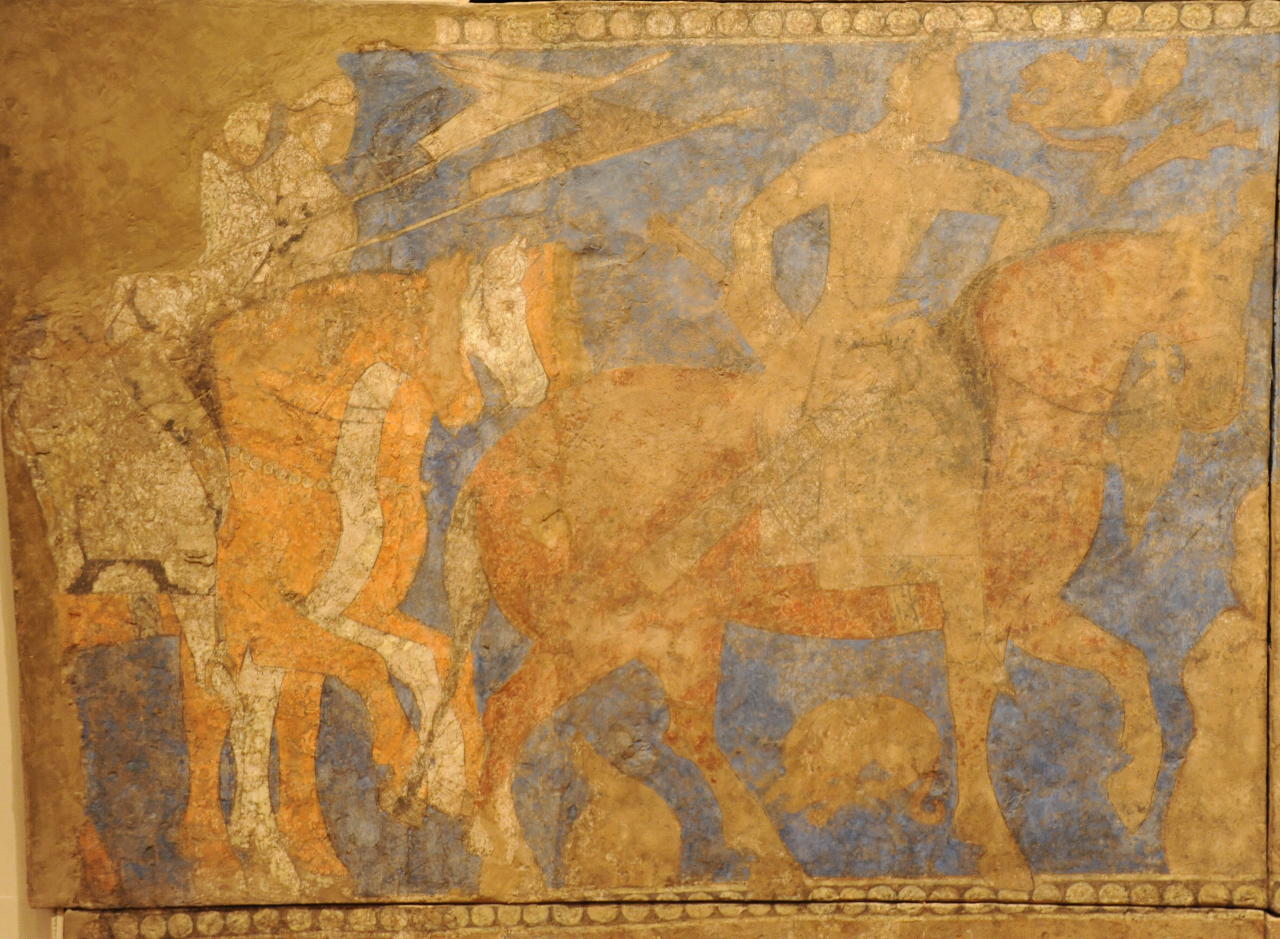
Amazon Audible Gift Memberships
Sogdian Horsemen.
Sogdian Mural on the far left in the ‘Blue Room’: Rustam cycle



BLUE HALL - RUSTAM CYCLE
[Julie Bellemare's Object Study]
The Blue Hall, contrary to what one might expect, was not a hall located in the palace of a king or a prince, but in a house of average size and decoration located in Panjikent, a small town in Sogdiana. It stands out among other excavated examples for its exceptionally well-preserved mural paintings, which can be dated to circa 740. The so-called ‘Rustam room’ is the most famous painted hall of Panjikent, and was discovered in 1956-57 by Boris Stavisky. It is named after the main figure depicted in the paintings: Rustam, one of the heroes of Middle Persian poetical texts from which the Shahnameh epic is also derived. The main portion of the mural depicts marching horsemen with the hero at their head, alternating with dynamic scenes of duels and battles. The relationship between the textual, oral, and visual forms of these stories is an important driving force in the painted murals.
The narratives are organized into four different registers, or ‘cycles,’ each running horizontally across the length of the walls (Fig.2). Each cycle contains a different type of story or subject matter. The lower tier contains scenes from fables and moral tales, while the tier immediately above the ‘Rustam cycle’ is unidentified and depicts two protagonists in plain clothes enjoying a victorious return (Marshak 2002, 55-61). Only one scene of the uppermost tier survives. It consists of two men in full armor standing guard next to fantastical creatures, which was likely a religious subject, as is the convention for this high placement (Marshak 2002, 18).
The frieze format also allowed the painter to tell a story sequentially, mirroring an oral tradition of retelling directly from the paintings. This is further evinced from the function of the room, which was used as a reception hall (Fig.3) (Marshak 2002, 28). There were mud-brick and clay benches along the walls, where people could sit. The owner of the house could therefore engage in semi-private viewing sessions with his invited guests, and the epics would be told with the help of stunning visuals.
The materials used to create these mural paintings translated the emotional content of the stories into visual form. The vibrant azure background color that gives the hall its name was achieved using pulverized lapis lazuli, a mineral mined in northern Afghanistan, and bound to the dry plaster of the walls using vegetable glue (Azarpay 1981, 162). Other mineral pigments included orpiment yellow, cadmium red, and orange realgar. Indigo, an organic colorant normally used for dyeing textiles, was introduced slightly later and mixed with orpiment to produce green. Unfortunately, several of these bright hues have faded over the centuries, and only traces of their original richness remains. In 2015, the restoration of the mural fragments was completed at the State Hermitage Museum laboratory. The work involved filling cracks, careful cleaning and mounting on a new base. The murals can now be fully experienced in the museum’s Winter Palace.
Bibliography
Marshak, B. I. 2002. Legends, Tales, and Fables in the Art of Sogdiana. New York: Bibliotheca Persica Press. (JB)
Azarpay, Guitty. 1981. Sogdian Painting: The Pictorial Epic in Oriental Art. Berkeley: University of California Press. (JB)
Source: “Blue Hall - Rustam Cycle ,” Telling the Sogdian Story: A Freer|Sackler Digital Exhibition Project, accessed December 7, 2020